산업용 로봇








산업용 로봇은 제조 로봇으로만 사용되는 로봇 유형을 나타냅니다. . 3개 이상의 축을 따라 이동할 수 있는 기능으로 자동화 및 프로그래밍 가능합니다. 간단히 말해서 그들은 로봇 팔을 가지고 있습니다. 그것은 모든 주위를 회전할 수 있습니다. 이러한 산업용 로봇이 수행하는 일반적인 작업 용접, 기타 기계 도장, 조립, 포장, 라벨링 등의 작업에 참여하고 있습니다.
2020년 현재 전 세계적으로 다양한 산업 분야에서 약 164만 대의 로봇이 작동하고 있습니다. 산업용 로봇의 역사 로봇의 최초 알려진 형태는 Meccano 부품을 사용하여 조립되고 모터로 구동되는 크레인과 같은 장치였던 1937년으로 거슬러 올라갑니다.
2030년까지 산업용 로봇은 사람에게서 2천만 개 이상의 일자리를 빼앗을 것으로 추정됩니다. 로봇 제조 회사 이 꿈을 실현하기 위해 새로운 혁신을 위해 열심히 노력하고 있습니다. 출처:Pixabay
산업용 로봇은 로봇 암이 있는 프로그래밍 가능한 기계 장치입니다. 너무 위험하거나 너무 반복적인 것으로 간주될 수 있는 작업을 수행하기 위해 인간을 대신하여 사용할 수 있지만 훨씬 더 높은 수준의 정확도를 제공합니다. 그것들은 각각 고유한 기능을 부여하도록 만들어진 움직이는 부품이 있는 복잡하게 설계된 기계입니다.
산업용 로봇을 만드는 데 드는 비용은 높지만, 직원 급여를 지불할 필요가 없기 때문에 인간보다 사용할 때 더 큰 이점이 있습니다. 게다가 지치지 않아 가끔 점검 시즌 사이에 며칠을 계속 달릴 수 있습니다.
앞서 언급했듯이 산업용 로봇은 특정 역할을 위해 설계되었습니다. 용접을 처리하도록 프로그래밍된 로봇은 페인팅이나 포장을 처리할 수 없습니다. 이러한 기능의 변화는 산업용 로봇을 분리하는 데 도움이 됩니다. 다른 유형으로. 현재 산업용 로봇은 다음과 같은 주요 유형으로 나눌 수 있습니다. 출처:Pinterest
다관절 로봇은 산업용 로봇 유형 중 가장 일반적입니다. 공장 로봇 팔이 있습니다. 비틀림 관절에 의해 관절에 연결된 인간의 팔 형태로 설계되었습니다. 팔의 링크는 일반적으로 2개에서 10개 사이의 회전 조인트를 통해 함께 연결됩니다.
관절은 움직임의 자유를 제공하여 로봇 팔을 허용합니다. 스냅하지 않고 어떤 방향으로든 회전합니다. 요약하면, 다관절 로봇 팔에는 6개의 관절이 있어 모든 산업용 로봇 중에서 가장 유연합니다. 따라서 그들이 가장 널리 사용되는 이유입니다. 출처:Pinterest
직교/갠트리 로봇이라고도 하는 직교 로봇 , 산업용 로봇입니다. 직사각형으로 구성된 유형. 그것들은 3개의 수직 축에서 미끄러질 때 영향을 받는 선형 모션을 전달하는 3개의 프리즘 조인트와 함께 제공됩니다. 다른 때에는 회전 운동을 가능하게 하기 위해 손목이 장착되어 있습니다. 데카르트 로봇은 산업 자동화 제조업체에서 널리 사용됩니다. , 주로 단순성과 유연성으로 인해 고유한 작업에 이상적입니다.
SCARA는 Selective Compliance Assembly Robot Arm의 약자로 도넛 모양의 작업봉투가 있는 산업용 로봇입니다. SCARA 로봇팔 한 곳에서 규정 준수를 제공하는 두 개의 평행 조인트가 있습니다. 로터리 시프트는 수평으로 움직이는 암에 부착된 엔드 이펙터와 함께 수직으로 위치합니다.
SCARA 로봇 측면 이동에 특화되어 이러한 이유로 주로 조립 로봇으로 사용됩니다. . 원통형 및 직교 로봇과 비교할 때 SCARA 로봇은 훨씬 빠르고 쉽게 통합할 수 있습니다.
델타 로봇은 공통 베이스로 연결된 병렬 조인트 연결로 만들어집니다. 병렬 링크 로봇이라고도 하는 이 로봇은 각 관절이 엔드 이펙터와 관련하여 위치하기 때문에 제어하기가 훨씬 쉽습니다. 이를 통해 Delta 로봇은 고속으로 움직일 수 있어 대량 제조와 관련된 작업에 이상적입니다.
Delta 로봇은 돔 모양의 엔벨로프를 가지고 있는데, 이는 궁극적으로 고속의 이유인 팔 내부의 무게를 줄이는 디자인입니다. 주로 픽 앤 플레이스 자동화에 사용됩니다. . 그들은 속도를 사용하기 위해 다른 기계와 완벽하게 동기화되어 작동하도록 프로그래밍되어 있습니다. 그렇지 않으면 컨베이어 벨트가 로봇에 재료를 공급하는 것과 같은 작업이 약간 느려지면 재앙이 될 것입니다. Source:blog.technavio.com
Polar robots are made of a twisting joint that connects the arm with the base and two rotary joints plus a single linear joint. Due to their spherical work envelope, Polar robots are also called Spherical robots. Another unique design feature in these robots is their centrally pivoting shaft and an extendable, rotating robotic arm . It also has a gun turret configuration that covers a very large volume of space when operational. Source:industrial-electronics.com
Cylindrical robots possess a single rotary joint at their bases and another prismatic joint connecting the inks. They have a cylindrical working space, hence their name, that comes with a pivoting shaft and an extendable robotic arm that moves by sliding vertically. This unique movement affords the robots, both vertical and horizontal movements.
The arm is also designed to allow the robot to reach tight work envelopes without any loss of speed or repeatability. Cylindrical robots are ideal for tasks that involve the picking or materials from the ground thanks to their advanced pick and place robotic arm. Source:Pinterest
There is a more recent version of industrial robots in use today that is worth mentioning here. Collaborative Robots are industrial robots that can work alongside humans without any need for stringent safety barriers. They have a rounded design and are equipped with special sensors that give them the ability to always know where humans are to give them the space to assist workers.
To get a better view of how they work, we must know the industrial robot parts that make up the robotic arm. They include the following: Source:Pinterest
Industrial robot controllers are the brains of the robot. They are the processors that carry the executable program that determines the movements that the robotic arm makes. They can either be automatically programmed or allow for manual operations by a qualified technician. In some places, they take the form of huge computer systems, and at times they are reduced to a simple joystick.
This is the part that does the actual work. It consists of three main parts:the shoulder, the elbow, and the wrist, just like humans. All these three parts are linked to each other through axes and joints controlled by the central processor, the controller. Each part has to move in relation to the other for efficiency to be attained. Source:Pinterest
This is the part that performs the functions of the hand. Most times, A robot end effector is made up of two claws that hold objects by closing and opening automatically. Some can spin and make maneuvering movements when holding or moving objects. Source:Pinterest
These are the motors between the joints that control the maneuvers and the movements of the robot arms . They usually use belts that are replicas of the ones found in car engines. Source:Pinterest
Industrial robotics companies have been on the rise in the last two decades, and as time progresses, so are the technological advancements in the robot world. Soon, we will have robots performing all the work around us. As much as they are causing disruptions as far as human labor is concerned, there is no denying that robots have made life much easier.
The following are some of the advantages of using industrial robotic arms .
Construction jobs are labor-intensive, and they involve a lot of heavy machinery that can pose a danger to human workers. Being exposed to harmful chemicals can also have a detrimental impact on people’s health. Industrial robotic arms have greatly reduced this risk as they can work in any condition since they are inanimate machines. They can handle repetitive work without losing focus even for a second.
Although the initial cost of acquiring a robot can be high, the long term benefits are huge. On top of scrapping the need for salaries, time offs, and other accruing benefits, robots are not prone to errors. The losses that factories have suffered due to the destruction of machines and products out of human negligence are things of the past.
What used to take days to achieve can now be attained within hours. The thing with human labor, it is prone to burn out, and rest is necessary. The only way you can keep production running for 24hrs is through shifts. Robots, on the other hand, can run for days without taking a single break. An intelligent assembly work cell can put in work that is equivalent to 4 people working at the same time.
Humans cannot replicate the accuracy and precision involved when robots are part of the production process. Robots used in manufacturing are guided by laser-sharp guidance technologies, which means every cut and measurement they make is right on the money. Articulated robots , for example, are the embodiment of accuracy in the robot world. Better accuracy translates to products with higher qualities.
Industries that use robots in manufacturing have seen production increase exponentially. As long as they are serviced regularly, they will keep doing consistent work no matter how harsh the conditions may be. The same thing cannot be said of human workers prone to sickness and fatigue, which ultimately affects their output. Source:Pixabay
A lot of manufacturers have switched or are in the process of fully automating their production process. The reasons for this are many, but the main one is that robots are reliable, reduce the cost of paying salaries, and save money that can be redirected to other things. The following are some of the industries that utilize robotic arm applications in their manufacturing processes.
Robotics in automotive manufacturing were among the very first to be adopted as far as industrial robotics go. As of now, you will not find any car maker that does not employ a car manufacturing robots for over 75% of its production. The automotive industry accounts for about 30% of the total industrial robotic arm installations. The most commonly used robot by car manufacturers is the ABB IRB 6640 that is good for welding car frames into place.
Just like the automotive industry, the making of planes requires a lot of robot power. The demand for air travel is increasing the world over, and to meet this demand, there is a need to manufacture more airplanes faster than before. Industrial robots are the answer to this need as they are faster and can be programmed to handle any kind of task. Applications like motor parts painting , sealing, drilling, and welding are some of the things that are handled by automated machines.
Electronics are part of our lives, and we cannot do without them. Their manufacture involves a lot of components whose assembly can be easily lost to humans. Industrial robots are now being heavily used in the manufacture of electronics as they are more adept at dealing with tiny and sensitive parts of electric appliances. The use of cleanroom robots, for instance, has greatly improved the quality of electronics as they prevent dust from ever coming into contact with the internal parts during assembly.
Food packaging is now handled exclusively by robots. In some places, it is even part of the requirements to employ the services of robots in a sensitive job that is the packaging and warehousing. The advantages of using robots in food processing is that there is less chance of contamination since robots are precise and fast. Putting food into the right portions and sizes has also become the hallmark of robotic food processing.
The sorting, bottling, dispensing, and inspection of medications is now a preserve of industrial robots . Robots have now been programmed to measure the exact amount of drugs on the last milligram. Robots in the medical and pharmaceutical industry have made it easier to handle drugs in a better way that avoids excessive wastage and contamination.
Delicate medical devices like surgical tools are now manufactured to the exact sizes as needed using medical robots that are changing the world. When medical tools are compromised, it makes it harder for doctors to treat their patients properly. Source:Pixabay
Robots used to cost a lot more in the past than they do right now. Mass production has made it possible for the prices to come down a little, but they are still on the higher end of the budget. In the present market, the average i ndustrial robot price is about $25,000, but it can rise to over $400,000 depending on the model and the size.
A robotic arm price also tends to go higher as you add more peripherals and extra features. Application-specific additions, like collision sensors and safety cages, which are a necessity, can double the initial price of the whole machine.
As an interested buyer, you can either go for a brand new robot or a cheap industrial robot arm that has been used before. One advantage of going for a second-hand robot is that you save on the cost, although you will experience some little mishaps along the way.
As the use of robotic arms across all industries rises, models are being created to handle application-specific tasks for various manufacturers. The following are the best programmable industrial robotic arms of 2020. Source:Pinterest
This is a robotic arm that is designed for multi-tasking. It can handle 3D printing, laser engraving, pick and place, drawing, and writing machines. It is equipped with over 20 coding languages, while at the same time, it is simple enough to be used by a beginner level individual. Source:Amazon
This is an arm that is powered by a servo to effect movement flexibly. It has a metal claw that is strong enough to handle heavy loads in any direction. Control of the robot can be done wirelessly and, at the same time, can be controlled through a smartphone.
This is a robotic arm created by EVS that has a maximum payload of about 1700 pounds. The whole robot itself with the other parts combined is about 5600 pounds which gives a very stable foundation for any heavy lifting task common in most manufacturing industries. Source:Pinterest
This is a robotic arm equipped with five joints controlled by a wired-5 switch controller that can be operated remotely. D batteries can power the robot at the same time it can be powered by AC power. It has a base rotation of 270° and has an extended life on the gearbox. Source:Pinterest
When it comes to choosing a robot arm, there are things you must consider first.
Just because it is a robotic arm does not necessarily mean that you can use it to open your beer, each robotic arm is designed for a specific application. An arm designed for painting cannot be used as a polishing arm or vice-versa. Unless the robotic arm is a multi-purpose one, then you are stuck with one function robotic arm.
Payload refers to the maximum amount of load that the robotic arm can handle. If you are dealing with a heavier load like industrial packaging, then you will need to go for a big robot arm that can handle heavier loads with a simple pick and place automation .
The movement a robotic arm can maneuver depends on the number of axes. The more the number of axes, the more flexible the arm will be in terms of movement. Bigger robotic arms require more axes as it takes more effort for them to turn.
If you are dealing with repetitive tasks, then you will be best served with a high-speed robot arm that is as fast as possible, an articulated robot is an example of a fast robot that is suitable for such a task. Some robotic arms come with the options that allow the controller to adjust the speed.
You can only get what you can afford. If you’re dealing with high volume work like manufacturing, you will need more than one robotic arms, which will cost you a lot. If all you are looking for is a simple contraption for home use, then a simple low-cost robot arm is what you should be going for.
Industrial robot technology is becoming indispensable as time goes by. The manufacturing industry is as good as done with human labor already as we speak. The little left of human labor is reduced to maintenance and the controlling of these robots when the need arises. Someday, in the future, robots will be the standard feature in all industries around the world.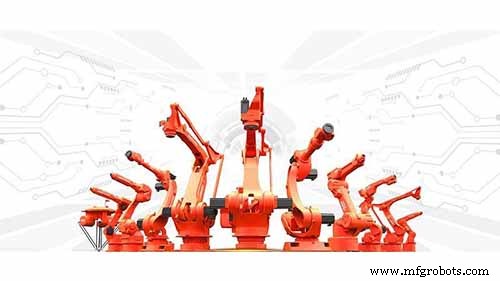
목차
산업용 로봇이란 무엇입니까?
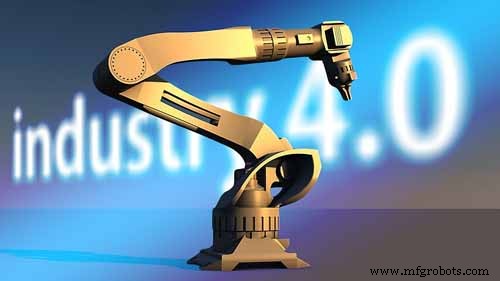
산업용 로봇 유형
다관절 로봇
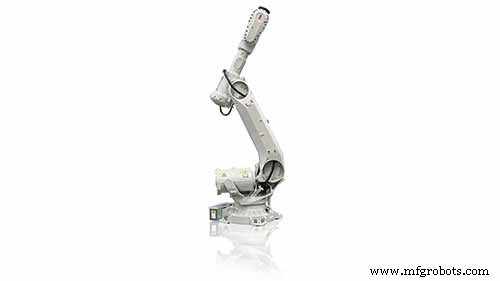
장점
단점
산업용 애플리케이션
데카르트 로봇
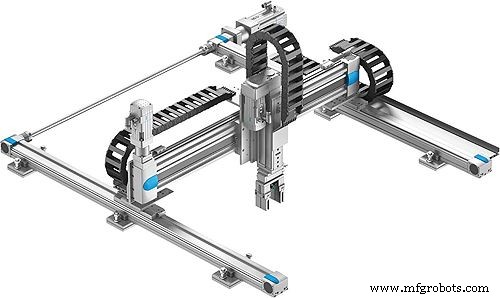
장점
단점
산업용 애플리케이션
스카라 로봇
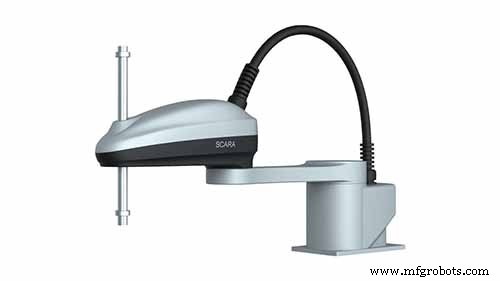
장점
단점
산업용 애플리케이션
델타 로봇
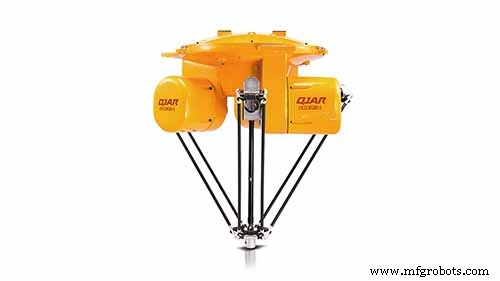
장점
단점
Industrial Application
Polar Robots
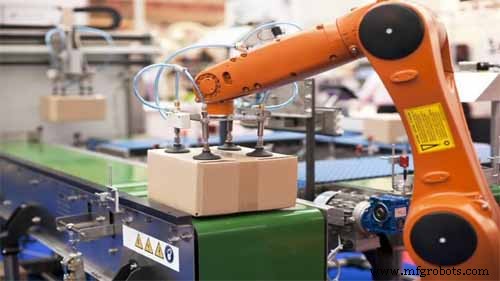
Pros
Cons
Industrial Application
Cylindrical Robots
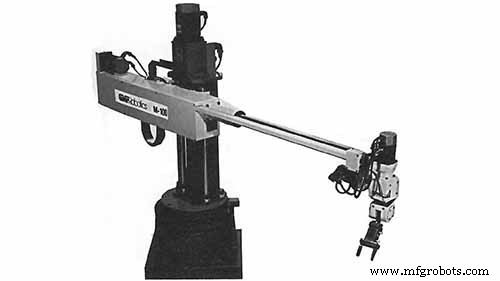
Pros
Cons
Industrial Application
Cobots
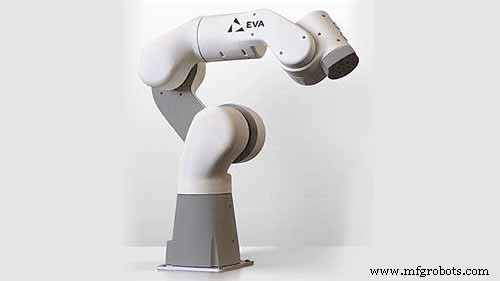
Pros
Cons
Industrial Application
How Do Robotic Arms Work?
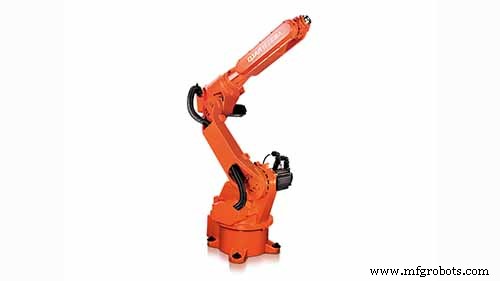
Robotic arms are designed based on the human arm, and they work almost in the same manner. How a robotic arm works depends on the task it has been designed for. In general, however, there is a specific way that all robotic arms function. They all depend on joints for movements and are equipped with other features that make this possible, sensors, for instance. Controllers
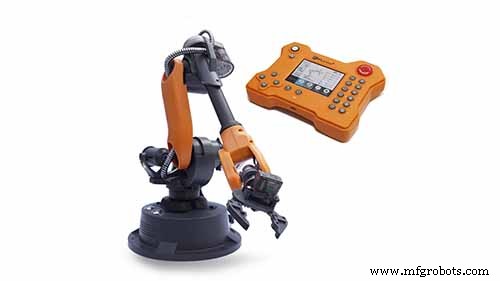
Arms
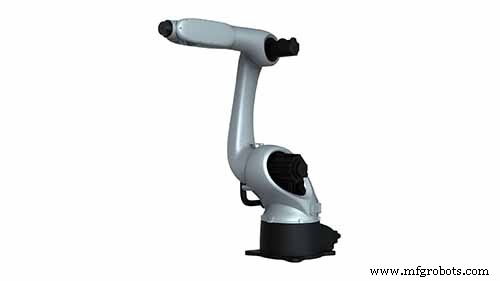
End Effector
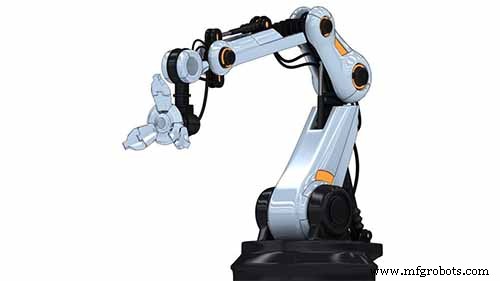
Drives
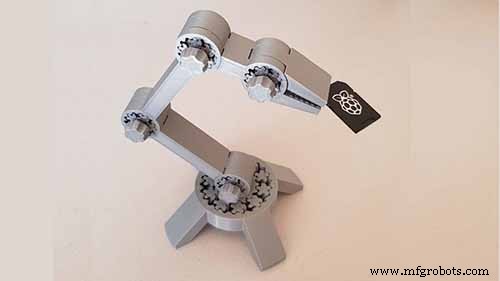
Why Do You Need Robotic Arms?

Improved Worker Safety
Decreased Costs
Increased Productivity
Better Product Quality
Reliability
What Industries Use Industrial Robots?
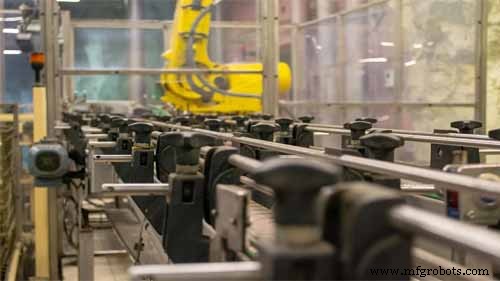
Automotive Industry
Aerospace industry
Electronics Industry
Food Industry
Medical and Pharmaceutical Industry
How Much Does A Robotic Arm Cost?

The Best Programmable Robotic Arms of 2020
DOBOT Magician Educational Programming Robot
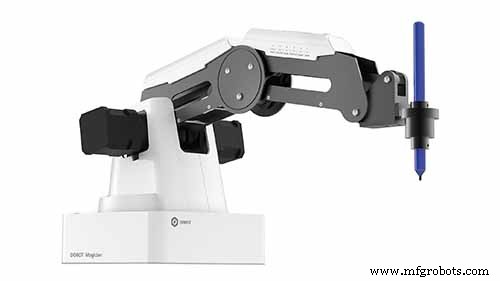
LewanSoul LeArm 6DOF Full Metal Robotic Arm
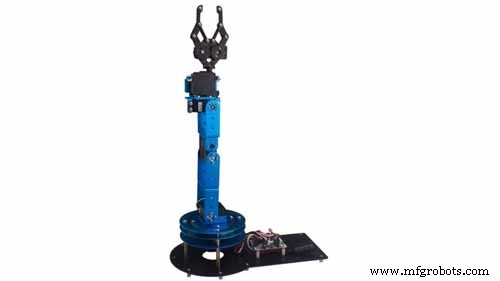
QJRB800-1 Robot Arm
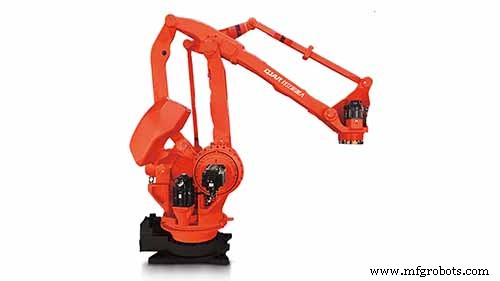
Owi Robotic Arm Edge
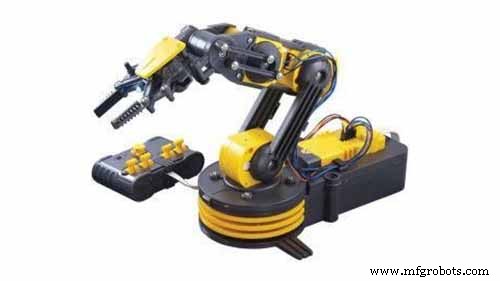
How To Choose Industrial Robotic Arms
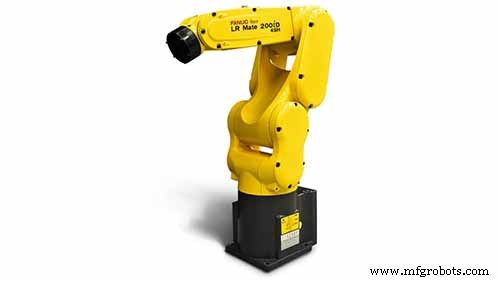
Application
Payload
Degree of Freedom
Speed
Cost
Conclusion
산업용 로봇
로봇 자동화의 이점을 파악하는 데 로켓 과학자가 필요하지 않습니다. 로봇을 통해 제조업체는 생산 속도를 높이고 육체 노동자를 위험한 환경에서 보호하며 산업의 유연성과 다용성을 높일 수 있습니다. 다재다능한 로봇이 생산 공정을 간소화했습니다. 로봇은 새로운 프로세스와 시장 수요의 변화에 적응할 수 있습니다. 다용도성 덕분에 피킹 앤 플레이스, 용접, 유체 분배, 외관 변경 등 필요한 작업을 위해 재프로그래밍하는 데 최소한의 시간이 소요됩니다. 로봇 사용자가 더 많은 다용성을 요구함에 따라 로봇 팔 끝 툴링이 중요해지고 있습니
로봇을 사용하면 다양한 응용 분야에서 효율성과 정확도가 향상됩니다. 로봇의 기능은 사소한 작업부터 용접 및 드릴링과 같은 산업 공정, 수술을 받는 사람의 수술에 이르기까지 다양합니다. 로봇은 컴퓨터에 의해 제어되는 기기/기계입니다. 위험하거나 반복적인 작업을 위해 인간의 노동력을 대체하므로 시간과 비용을 절약할 수 있습니다. 결코 지치지 않기 때문에 열악한 환경에서도 장시간 일할 수 있습니다. 조립, 용접, 도장, 제품 검사, 집기 및 배치, 다이캐스팅, 드릴링, 유리 제조 및 연삭과 같은 애플리케이션은 모두 로봇에 의해 수행됩